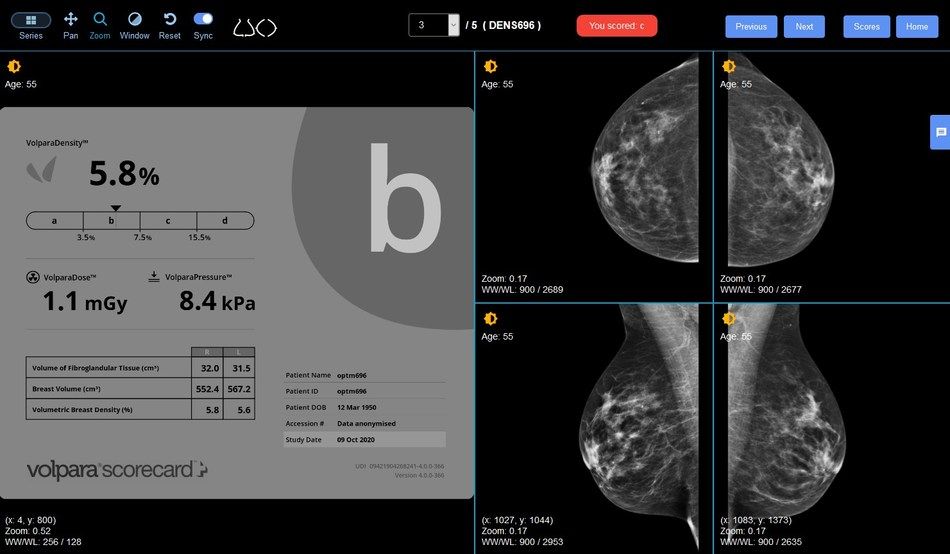Partnership Introduces First-in-Kind Breast Density Training Tool
Volpara Health and DetectED-X are collaborating to make a breast density categorization training tool available to radiologists worldwide.
Volpara Health and DetectED-X announced Monday they are collaborating to bring a first-of-its-kind breast density training tool to radiologists across the world.
The new training module, dubbed DensityED, is intended to help radiologists correctly identify breast density categories, making it easier for them to comply with the Breast Imaging-Reporting and Data System (BI-RADS).
“While we have seen tremendous advances in medical imaging and AI tools to improve the detection of breast cancer, varying levels of skill and experience among radiologists reading mammograms can contribute to interpretation errors and variations in assessing breast density,” said Patrick Brennan, chief executive officer of DetectED-X and chair of diagnostic imaging at the University of Sydney. “Such errors and variations can delay diagnosis and impact the effectiveness of the treatment of disease, which may have important clinical and economic implications.”
Related Content: Pairing DBT with Automated Breast Density Measurements Leads to Fewer Recalls
To address those existing variations, company officials said, DensityED, which is available in 39 countries and sold through DetectED-X, meshes Volpara and DetectED-X technologies, including BreastED, DetectED-X’s radiologic breast cancer detection training. Once a provider completes the training, he or she receives continuing education credits.
DensityED Screenshot Courtesy: Volpara Health

During the training, providers rate more than 60 mammograms of differing difficulty levels, classifying images into BI-RADS breast density categories A through D. Immediate feedback provides an assessment of their reading performance and density classifications, tells them when there is disagreement between their classification and Volpara’s software, and gives them an opportunity to correct errors. Providers can also compare their performance to colleagues across the globe.
This training module can be particularly impactful, according to company representatives, given there is a chance that a proposed federal regulation requiring mammography facilities to tell women about their breast density after a screening mammogram could go into effect across the country.
“DensityED will help radiologists improve their ability to correctly and consistently perform BI-RADS density assessment, which is becoming increasingly important in light of the personalization of screening and expected FDA density reporting regulations,” said Ralph Highnam, Ph.D., founder and chief executive officer of Volpara Health Technologies. “Accurate, reproducible density information is needed to empower women in their breast health journey.”
For more coverage based on industry expert insights and research, subscribe to the Diagnostic Imaging e-Newsletter here.